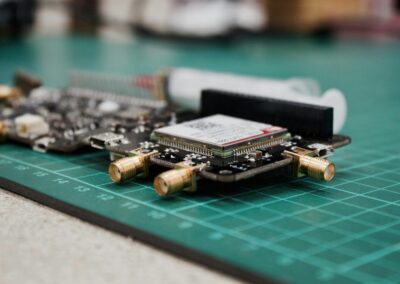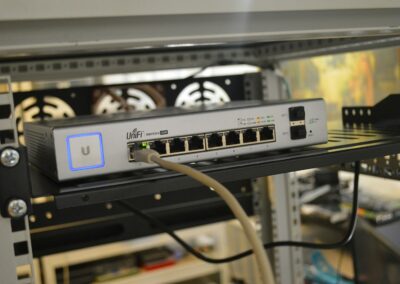Understanding the Risks of Insecure Third-Party Libraries
Introduction to IoT Software Vulnerabilities
In the rapidly evolving landscape of the Internet of Things (IoT), the use of third-party libraries in software development has become a common practice. However, the reliance on insecure third-party libraries in IoT software can lead to significant vulnerabilities, compromising the security and integrity of connected devices. This issue is particularly relevant in technologically advanced regions such as Saudi Arabia and the UAE, where IoT adoption is accelerating. Insecure libraries can introduce backdoors, outdated protocols, and exploitable bugs, making IoT devices susceptible to cyberattacks. Understanding these risks is the first step in mitigating potential threats and ensuring the robustness of IoT systems.
Real-World Implications of IoT Software Vulnerabilities
The implications of insecure third-party libraries extend beyond theoretical risks; they have tangible, real-world consequences. For instance, in smart cities like Riyadh and Dubai, IoT devices are integral to critical infrastructure, including traffic management, energy distribution, and public safety systems. A vulnerability in one IoT device can potentially lead to widespread disruptions, data breaches, and financial losses. An example of this is when an insecure library in a smart traffic light system could be exploited to cause traffic chaos or even endanger lives. Therefore, ensuring the security of third-party libraries is crucial to maintaining the integrity of IoT ecosystems in such urban settings.
The Need for Secure Software Development Practices
To mitigate the risks associated with insecure third-party libraries, organizations must adopt secure software development practices. This includes rigorous vetting of libraries before integration, regular updates, and continuous monitoring for vulnerabilities. In regions like Saudi Arabia and the UAE, where digital transformation is a priority, implementing these practices is essential. Companies can also benefit from leveraging automated tools for dependency management and vulnerability scanning. By incorporating secure development practices, organizations can significantly reduce the risk of vulnerabilities and enhance the overall security posture of their IoT systems.
Implementing Measures to Ensure Secure Libraries in IoT Software
Conducting Comprehensive Security Audits
A proactive measure to ensure the security of third-party libraries in IoT software is conducting comprehensive security audits. These audits involve assessing the codebase of third-party libraries for potential vulnerabilities and compliance with security standards. In the UAE and Saudi Arabia, where businesses are increasingly integrating IoT solutions, regular security audits can help identify and mitigate risks before they are exploited. Utilizing third-party security firms to perform these audits can provide an unbiased evaluation of the libraries, ensuring that only secure and reliable components are used in the development process.
Establishing a Robust Update and Patch Management System
Another critical measure is establishing a robust update and patch management system. IoT devices often rely on a combination of hardware and software, making timely updates and patches essential to address newly discovered vulnerabilities. In regions like Riyadh and Dubai, where the implementation of smart city technologies is on the rise, maintaining an efficient update system ensures that all devices remain secure and functional. Organizations should prioritize deploying patches promptly and ensure that all third-party libraries are regularly updated to the latest versions. This practice helps prevent the exploitation of known vulnerabilities and enhances the resilience of IoT systems.
Adopting Secure Coding Standards and Best Practices
Adopting secure coding standards and best practices is vital to mitigate risks associated with insecure third-party libraries. Organizations should enforce guidelines that require developers to follow security best practices when integrating third-party components. This includes validating the authenticity of libraries, avoiding deprecated libraries, and ensuring that all dependencies are necessary and secure. In the context of Saudi Arabia and the UAE, where the digital economy is rapidly expanding, adhering to these standards is crucial for building secure IoT ecosystems. Additionally, providing ongoing training for developers on secure coding practices can further enhance the security of IoT software.
Conclusion
The use of insecure third-party libraries in IoT software poses significant vulnerabilities that can compromise the security and functionality of connected devices. By understanding these risks and implementing measures such as comprehensive security audits, robust update management systems, and secure coding standards, organizations in regions like Saudi Arabia and the UAE can enhance the security of their IoT systems. These practices are essential for ensuring the integrity and reliability of IoT solutions, ultimately contributing to safer and more resilient smart cities and business environments.
#InsecureLibraries #IoTSoftwareVulnerabilities #Cybersecurity #SecureIoTDevelopment #RiskManagement #SaudiArabia #UAE #Riyadh #Dubai #BusinessSecurity #TechnologyManagement































